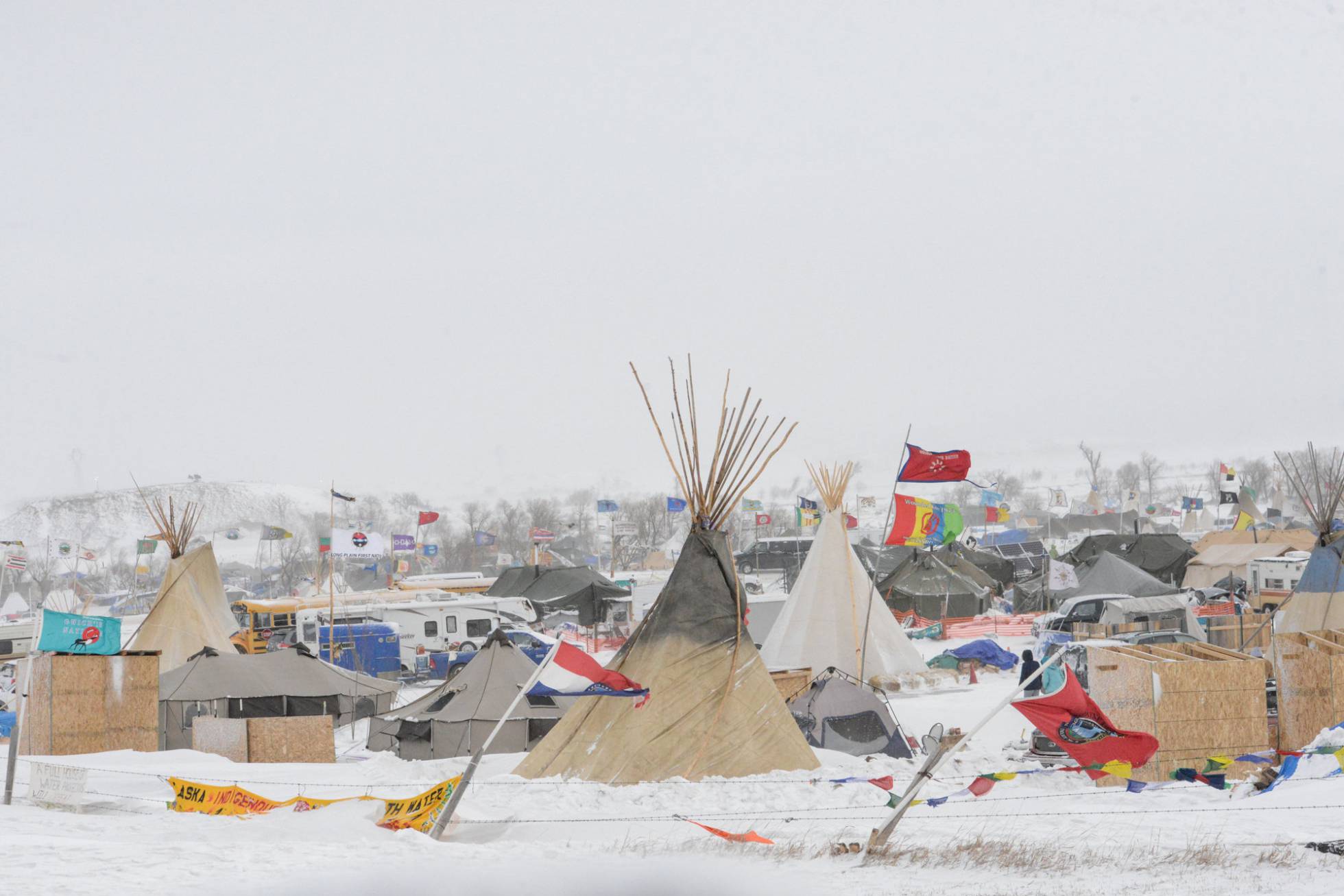
Victory against North Dakota Oil Pipeline Invigorates Sioux Activism
2016 hasn’t been just any other year for Native American communities in the United States. The Standing Rock Sioux tribe’s protest has succeeded in halting construction on the North Dakota oil pipeline that had sought to cross their ancestral lands in what is considered to be one of the strongest-felt and most popular protests in the history of Native American activism. Opposition to the Dakota Access project has aroused a revival in Sioux activism and has succeeded in bringing together environmental activists, war veterans and Hollywood stars under the same banner. The planned pipeline has transformed into the new symbol of the environmental movement.
This movement isn’t anything new, however; nor is the feeling that indigenous lands are in danger.
In the 19th century, more than 10,000 members of the Lakota Sioux, Cheyenne and Arapaho tribes came together to protest an attempt on the part of the United States Army to remove them from their lands in order to look for gold. This protest resulted in the Battle of Little Bighorn during which Native Americans defeated U.S. forces and wrested back control of their lands. In 1973, indigenous activists occupied a town located in South Dakota in order to protest management overseen by the federal government.
Native American activism also boiled up in opposition to the Keystone XL Pipeline, the construction of which was rejected last year by the Obama administration. The project sought to transport crude oil from Canada down to the Gulf of Mexico by way of North Dakota, the epicenter of the oil boom that’s emerged out of the extraction technique known as fracking. Unlike Dakota Access, however, the Keystone XL project did not directly affect lands considered to be sacred by the Sioux.
“There are no rights being violated here that haven’t been violated before,” said Kim Tallbear, a professor of Native Studies at the University of Alberta, who’s worked as an environmental planner for the U.S. government, during a radio interview with NPR.
Tallbear sees a precedent for the police oppression that has been directed at the hundreds of protesters, who, since April, have erected and occupied an encampment in order to block construction of Dakota Access. “I’m, like, oh yeah, they did that in the 19th century, they did that in the 16th century,” she said.
“The tribe has been forgiving for over 200 years,” said Dave Archambault this week, the Standing Rock Tribal Chair, whose reservation extends into South Dakota and is home to over 8,000 people.
Following the decision of the U.S. Army Corps of Engineers this past Sunday to search for an alternative route for this stretch of the oil pipeline, the indigenous leader called on protesters to abandon their encampment in light of freezing temperatures. “We have to take the next step on this issue and get over it and start working together again,” he said.
This success of the Sioux could prove to be a temporary one, however. U.S. President-elect Donald Trump, who has business interests related to infrastructure, has signaled his support for the construction. When he assumes office on Jan. 20, the Republican could end up deciding to opt for the oil pipeline’s originally planned route. Archambault has requested a meeting with Trump.
The project, which has a budget of $3.8 billion and is being pushed forward by the company Energy Transfer Partners, has sought to unite North Dakota with oil refineries located in Illinois by passing through two other states. The oil pipeline, which was originally planned to pass below Lake Oahe and cross the Missouri River, has been completed with the exception of the section that has been temporarily halted. The Sioux have alleged that its construction would harm lands considered to be sacred, and they have also expressed concern that any accidental leak in the future could contaminate the reservation’s water source.
The U.S. Army Corps of Engineers, which is responsible for the lands in question, will seek an alternative route, but even so, it is likely that the pipeline will still have to cross the river. In September, the corps declared a temporary halt to construction work.
What a definitive end to construction will not do, however, is address the structural problems plaguing the Standing Rock tribe as well as many other Native American reservations in the United States. A casino is currently the primary economic driver of the tribe, whose members were visited by Obama back in 2014 when he made an announcement regarding new plans to provide aid to indigenous communities. Poverty, unemployment, violence and school dropout rates are quite high among Standing Rock tribe membership.


